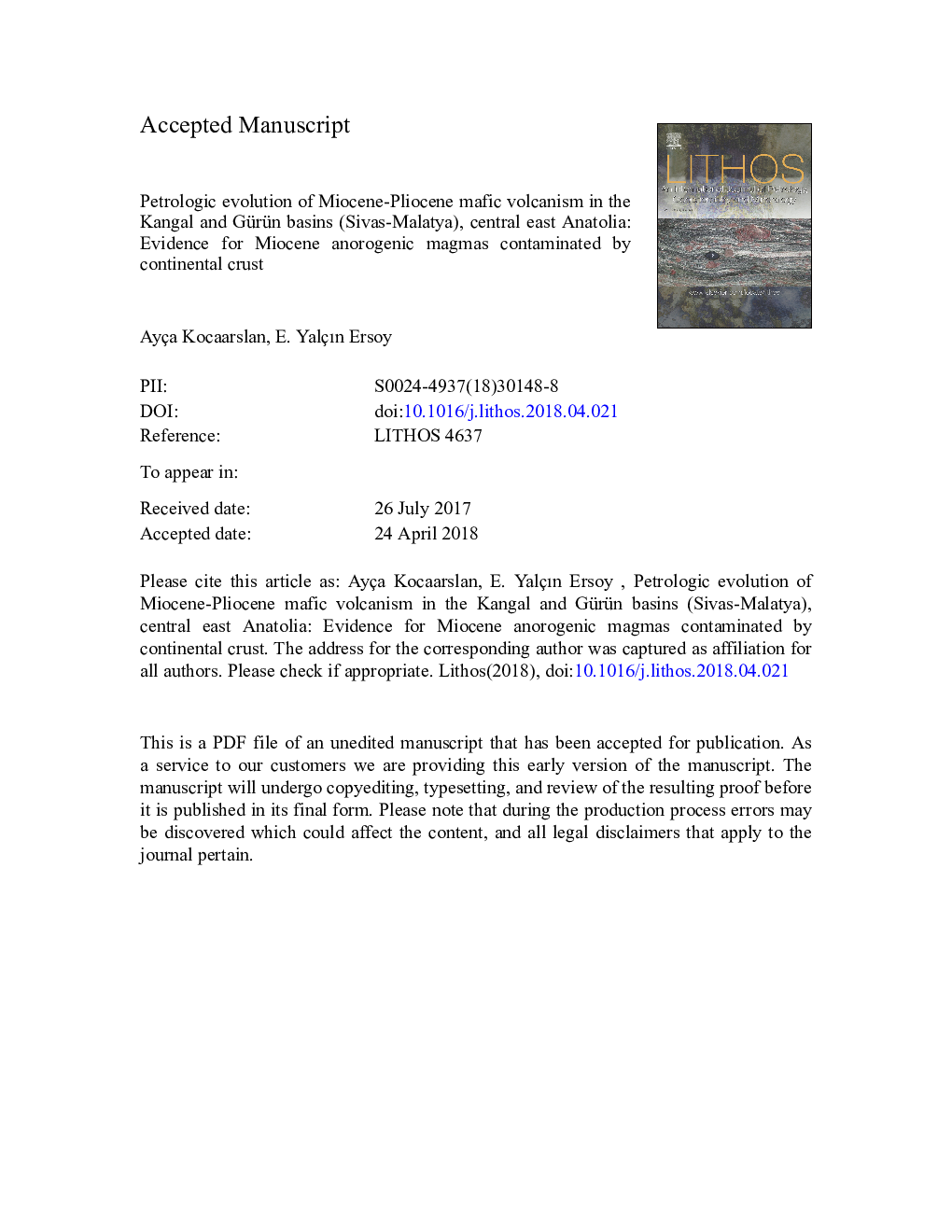| Article ID | Journal | Published Year | Pages | File Type |
|---|---|---|---|---|
| 8911627 | Lithos | 2018 | 57 Pages |
Abstract
Most primitive Pliocene samples show intra-plate (anorogenic) geochemical features, while the more evolved Miocene calc-alkaline samples resemble geochemically subduction-related (orogenic) magmatic rocks. However, on the basis of detailed geochemical models, we propose that the calc-alkaline affinity among the Miocene samples can also be gained by crustal contamination of their primary magmas which were also anorogenic in character. If this is true, overall, the Miocene and Pliocene basaltic to andesitic rocks in the Gürün and Kangal basins appear to may have formed by variable degrees of partial melting of a common anorogenic mantle that had not been subject to subduction-related metasomatism. This is an alternative approach to the general view assuming the Early-Middle Miocene magmatic activity in the region was derived from subduction-modified mantle sources in response to subduction of the Arabian Plate under the Anatolian Plate. This hypothesis further implies that either delamination of the sub-continental lithosphere or slab break-off processes beneath the central to eastern Anatolia might took place well before the Miocene, thus allowing upwelling unaltered mantle to provide the source of the Miocene to Pliocene volcanic rocks.
Related Topics
Physical Sciences and Engineering
Earth and Planetary Sciences
Geochemistry and Petrology
Authors
Ayça Kocaarslan, E. Yalçın Ersoy,
